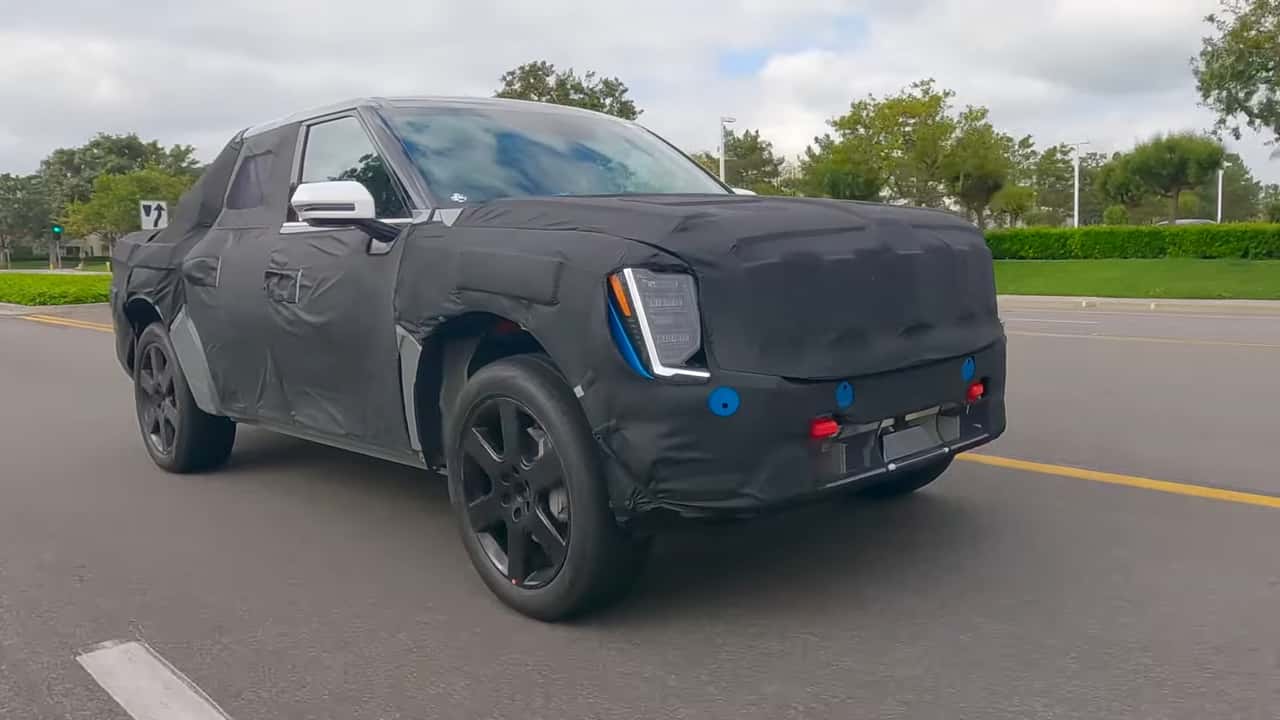Introduction to Kia’s Electric Venture
Kia is poised to make a significant entrance into the American electric vehicle market with a new all-electric pickup truck, aiming to challenge the Honda Ridgeline by 2026. This vehicle, cloaked in heavy camouflage during its test runs in California, hints at a design inspired by the EV9’s aesthetics with the practical features of the Santa Cruz, suggesting a fusion of style and utility. The vehicle was captured on video sporting an eclectic mix of body panel colors and nondescript black wheels, indicating its prototype phase.
Technical Insights and Market Positioning
Projected to share the E-GMP platform with Kia’s acclaimed EV9, this electric pickup is expected to offer advanced automotive technologies including a front coil suspension and an independent rear setup, enhancing its driving dynamics. The prototype’s dimensions suggest it will directly compete with mid-size trucks like the Honda Ridgeline and, potentially, electric models like the Rivian R1T. Kia’s strategy includes diversifying its electric vehicle portfolio, reflecting a broader trend among automakers to leverage shared platforms for new models to optimize development costs and efficiency.
 Kia electric mid-size pickup spotted testing in the United States (Source: KindelAuto / YouTube)
Kia electric mid-size pickup spotted testing in the United States (Source: KindelAuto / YouTube)Strategic Moves and Future Prospects
Kia plans to introduce not just this electric pickup but also another model specifically tailored for emerging markets by 2026, highlighting the brand’s ambitious expansion in the electric vehicle sector. While the test vehicle was seen with Michigan plates, its manufacturing location remains undisclosed; however, producing it within the U.S. could offer buyers significant incentives, including a $7,500 tax credit. Kia must navigate manufacturing and import policies wisely, as assembling the truck overseas could lead to missing out on U.S. federal incentives due to existing import tariffs on light trucks.
Beneficial Insights for Potential Buyers and Enthusiasts:
For those keen on transitioning to electric vehicles, especially in the pickup truck category, Kia’s upcoming model promises to blend utility with the environmental benefits of electric propulsion. The use of the E-GMP platform suggests high efficiency and potentially fast charging capabilities, aligning with the needs of truck users who may rely on their vehicle for both work and leisure. Furthermore, potential buyers should stay informed about the development of this vehicle, as its features, price point, and incentives will significantly influence its competitiveness in the burgeoning electric truck market.
